Wednesday 03 June – Friday 12 June 2015
http://ai.aaschool.ac.uk/athens/
TEAM
| Programme Director: | Alexandros Kallegias |
| Visiting School Director: | Dr.Christopher Pierce |
| Host School Coordinators: | Evangelos Kanellopoulos |
| Tutors: | Alexandros Kallegias, Dr.Elif Erdine, Dağhan Çam, Anna Laskari, Tassos Kanellos, Zeynep Aksoz, Elina Pattichi |
| AKTO Teaching Assistants: | Konstantinos Tsivilis, Konstantinos Panagiotopoulos |
SYMMETRY SENTIENCE :: ZnS
In June 2016, as part of the AA Athens | AA Istanbul Visiting School, the Architectural Association will travel to Greece to continue its advanced architectural research on biomimetic and participatory design. In 2015, the AA Athens Visiting School began its new agenda, Symmetry Sentience, in collaboration with AKTO Art & Design College. From June the 3rd until June the 12th, 31 students participated in this international programme under the direction of Alexandros Kallegias with 6 more international tutors through a two-stage process. During the first stage, participants were exposed to basic and advanced tutorials on generative design algorithms and analysis tools, team-based tutorials, lectures and presentations by Dr.George Jeronimidis, Enrico Dini and Dr.Sean Hanna. This stage was concluded with the design proposals by the students’ teams and was followed by the second stage where the design and fabrication of the final prototype was made in united effort by all the participants and tutors.
The AA Athens Visiting School research was initiated by revisiting the Gestalt principles. The basic design principles of this theory like the perception of space, form, colour, and transparency, the individual and holistic perception of multiple elements were used as the main data that were evaluated in the work of the student groups. Throughout the program various parametric software were taught including Grasshopper for McNeel Rhinoceros, the open-source scripting platform Processing, and open-source electronic platform Arduino, while the participants were introduced to the workflow between analogue and digital methodologies of the architectural discipline. As integral part of the design methodology, the parametric tools used in the AA Athens Visiting School enabled the designers to evolve beyond the linear approach and towards real-time simulation and adaptation of form. This allowed for a more dynamic presentation of the work by the design teams which managed to effectively present through their proposals how various design elements were being altered in time as the prototype reacted to different external stimuli.
The final 1:1 scale kinetic prototype Flexion, which was designed and fabricated in stage 2, is a suspended canopy of 4 meters in length and 1 meter in width. This structure is made out of 1 mega `brain`, 2 massive rotary `muscle` actuators, 72 metal flywheels, 120 transparent Perspex moveable pieces, 300 meters of wiring and 480 connecting knots. It is currently installed at AKTO College of Art & Design`s entrance hovering above the ground with its’ transparent acrylic triangulated pieces moving in choreography while being illuminated by a set of LEDs. The ability to detect human presence via Arduino distance sensors triggers the actuators that rotate and in turn set in motion the triangulated pieces of the canopy. A strategic arrangement of the triangles position in relation to the length of their hanging strings creates an intricate choreography of lighting effects that are visible by the sunrays during the day or the artificial lighting of the LEDs during the night. The aim is to challenge in this manner the phenomenon of perceptual constancy through moving transparent forms and immaterial shapes.
TEAM PROPOSALS
Coffee Monsters Team
[Nicoletta Afentouli, Phoebe Fotinaki, Philippe-Raphael Hadjisymeou, Omer Kirazoglu, Petros Partalidis]
In the agenda of Symmetry Sentience `Active Bending` is a generative robotic installation populated by free flowing curvatures, which respond to human engagement. Using a real-time ultrasonic tracking system that can locate people and detect distance, each form has the capacity to process data in order to interact accordingly. Imagined and developed through means of digital computation, `Active Bending` draws its inspiration from the AKTO building curvature. The initial studies were in the manipulation of the movement of the curve in order to create a more freer-flowing, light weight structure. The final form was accomplished through material experiments, within the design constraints.
Timekeeping Appendages Team
[Kerry Hohenstein, Steven Ren, Evi Saflayioura, Spiros Koulias, George Kokkoris]
After analysing the movement of various organisms, a general trend discovered of open and closed stature in response to its organism’s comfort levels. This led to the creation of a module that could exhibit flexure between these two states through angular compression. Due to the site’s limited accessibility, the structure would primarily respond to environmental stimuli. However, the site’s integration into the façade allows the structure to be visually connected to its surroundings. The system was designed to be influenced by fluctuations of light throughout the day, so that the structure would behave as a timekeeping device. The individual appendages consist of a strip of material with control points on either side that are connected with a string. As the string is pulled, the strip is gradually collapsed into a spiral. The direction of movement depends on the side that compression is applied to and the curvature depends on the spacing of joints. In terms of the overall movement pattern, the goal was to create a dynamic wave that would progress through the structure. Using a series of camshaft gears, delay and rotation reversal was introduced in the motion of the axis.
E.R.C. Catalogue Team
[Alexander Beranek, William Qian, Evina Karliafti, Erica Galiti, Kalliopi Makrygiwrgou]
The project`s inspiration came from the idea that people should not rely on architecture to change the environment but use architecture to motivate human beings to become aware of their surroundings. The team`s design collects human physical interaction and translates the data into a numerical value which is associated with a specific type of emotion. The machine then transforms itself into predetermined shapes that represent that emotion. This method of data collection allowed the surface to collect pools of data that the system could cycle through which would in turn be a direct reflection of the student body. The surface’s location in a school environment allows it to act as a reflection of the student body so when many students are stressed or upset the surface responds and communicates that back to the students. It is then up to the students to address and fix the problems that is causing problems.
Transforming Terrain Team
[Xrysi Kolovou, Ariss Majid, Andreas Petras, Ioanna Siviti, Asimina Georgia Tsakona, Eirini Viaropoulou]
The project was inspired by the effect of stretched fabric and the various shapes that appear on a surface. The main interest was focused on a continuously changing terrain that is a result of symmetrical, controlled movement (spread out / gather together) that creates an architectural piece with ongoing possibilities of shapes through interaction. The shapes, sizes and connections of the moving pieces were parameters that played a major role on the final moving result. Furthermore, the interaction of the system with an approaching object was introduced.
Overall, having to deal with various possible movements at the same time, controlled or uncontrollable and the ever-changing architectural piece that is a created, became the team’s innovative approach of thinking when creating a piece of architecture.
Creature_Still to Be Determined Team
[Katerina Bakaliou, Chrysanthi Sini, Achilles Malamos, Sander Paling, Neil Grewal]
Inspired by the creatures inhabiting the tropical sea regions, the team focused on deciphering the form characteristics of the tetraodontidae also known as puffer fish. Its particular morphology with thinner external spines together with its natural defence mechanism to fill with air or water its elastic stomach to take an almost spherical shape acted as the starting point of their interactive design investigations. The aim of the canopy project has been to create a dual effect regarding the interaction between the built prototype and the person under it. As the person moves along the length of the prototype the various design stripes begin to curve and rearrange the position of the spine elements attached to them. Initially the stripes are placed to form a convex arc with the spines pointing outwards. While the person approaches the stripes change to a concave arc bringing the spines closer to each other and to the person. In this manner the dual effect is enabled by having a more intimate connection when someone is close and more distant when they move away.
P.A.S.I.D. Team
[Sokratis Baltas, Dimitra Spanou, Ioanna Beka, Anni Müüripeal]
By looking into the aerodynamic quality of the wings in various animals the “Leonardo Da Vinci Wings” project aimed at the analogy of a flying animal’s flap shape that affects its lift to the configuration of a symmetrical ‘winged’ model in order to affect the crowd around it. A set of triangular elements are positioned sequentially along the length of the canopy fixed by the tips of their form. A second set of gears is connected to the triangles via linear parts that set the wings in motion as soon as a person comes close to the prototype. By setting the connection points of the triangular ‘wings’ to the gears’ varying profile, the sine wave movements generated by the prototype resemble that of flighted species. While the form is based on this biomimetic system, its stir aims to affect the humans’ perceptual sense of their surroundings activating tranquillity by having a simple harmonic motion.
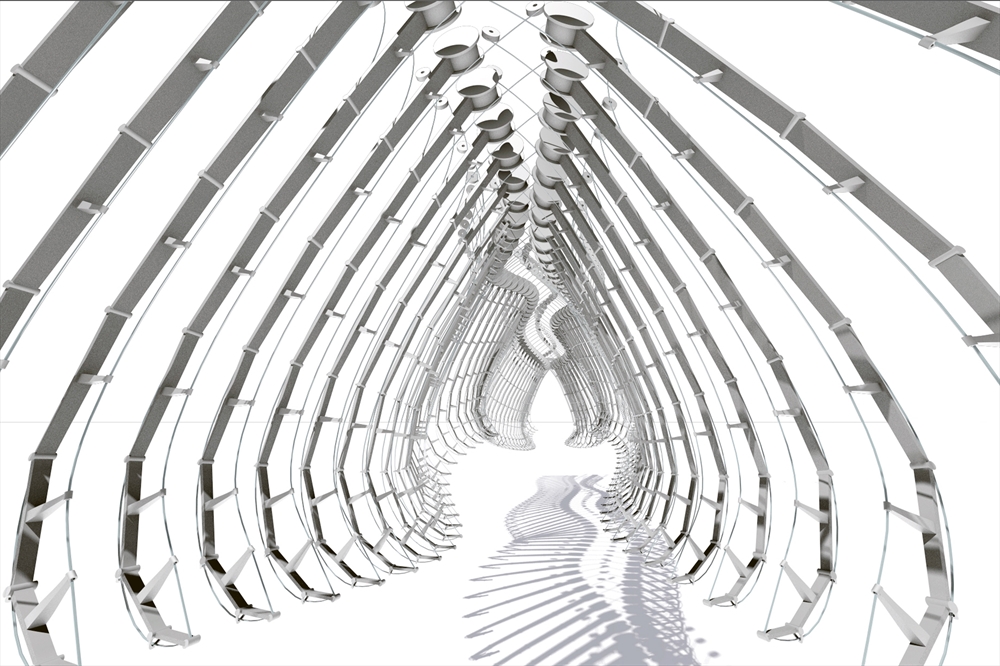 DESIGN PROPOSAL BY TIMEKEEPING APPENDAGES TEAM.
DESIGN PROPOSAL BY TIMEKEEPING APPENDAGES TEAM.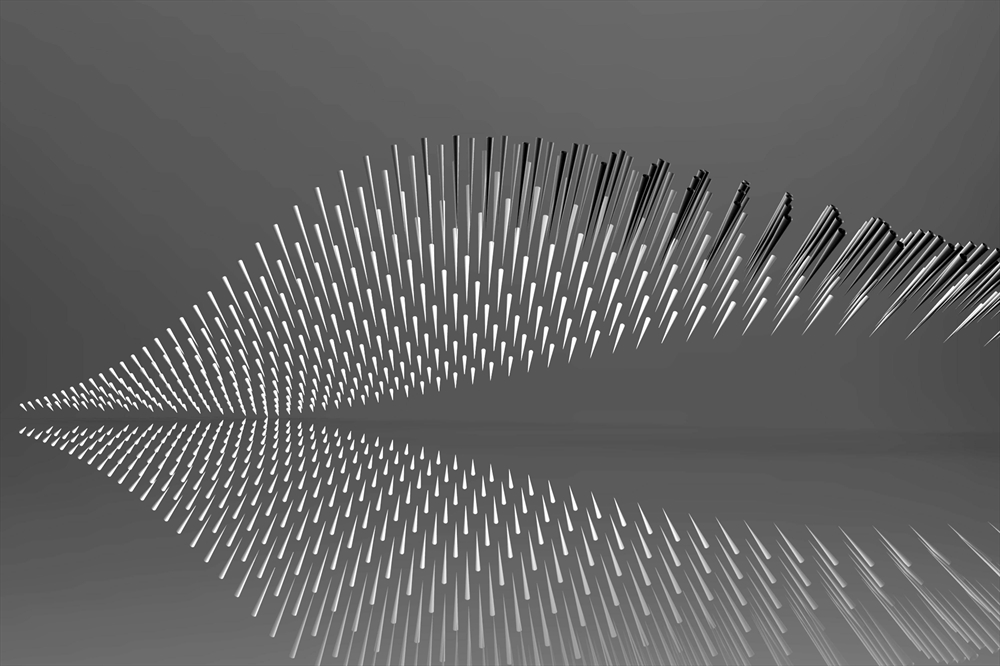 SPIKES CONFIGURATION DESIGN BY CREATURE_STILL TO BE DETERMINED TEAM.
SPIKES CONFIGURATION DESIGN BY CREATURE_STILL TO BE DETERMINED TEAM.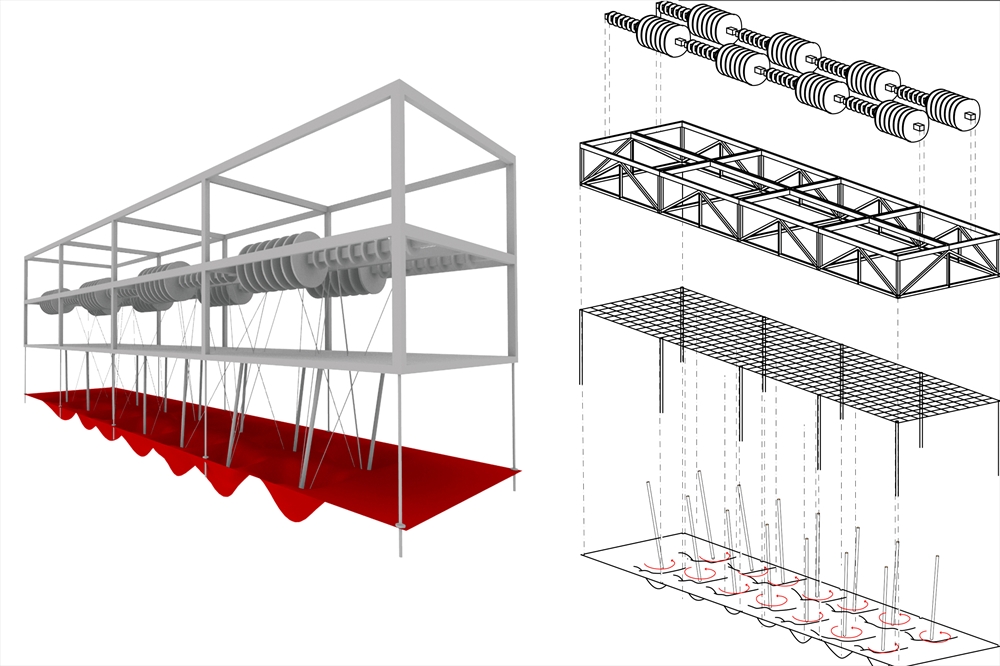 SYSTEM PROPOSAL BY TRANSFORMING TERRAIN DESIGN TEAM.
SYSTEM PROPOSAL BY TRANSFORMING TERRAIN DESIGN TEAM.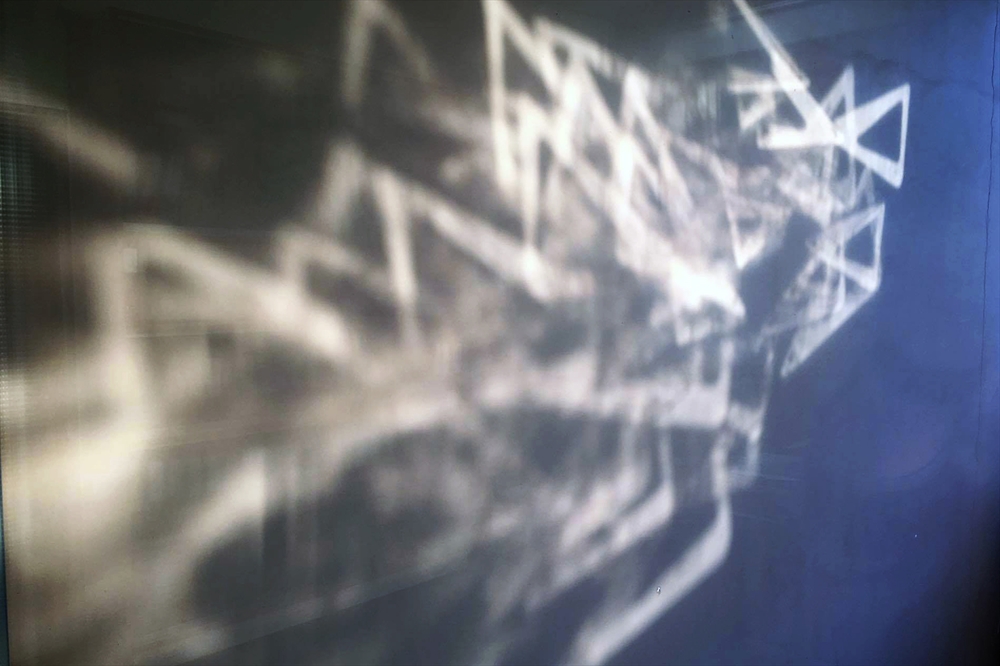 REFLECTION PATTERNS VIA ?FLEXION? KINETICS.
REFLECTION PATTERNS VIA ?FLEXION? KINETICS.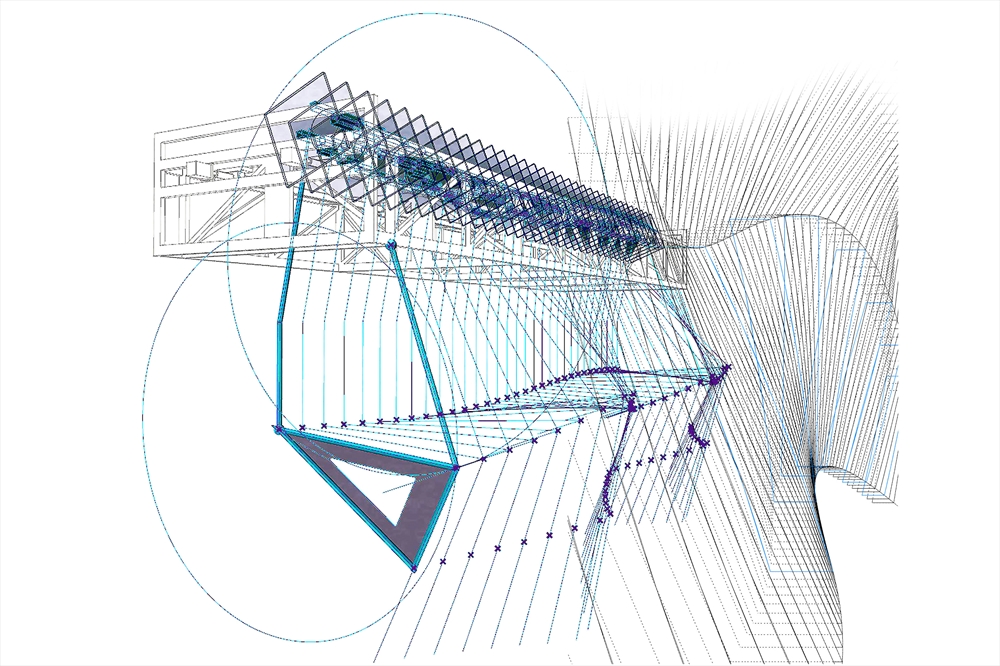 PERSPECTIVE VIEW OF ?FLEXION? KINETIC MECHANISM.
PERSPECTIVE VIEW OF ?FLEXION? KINETIC MECHANISM.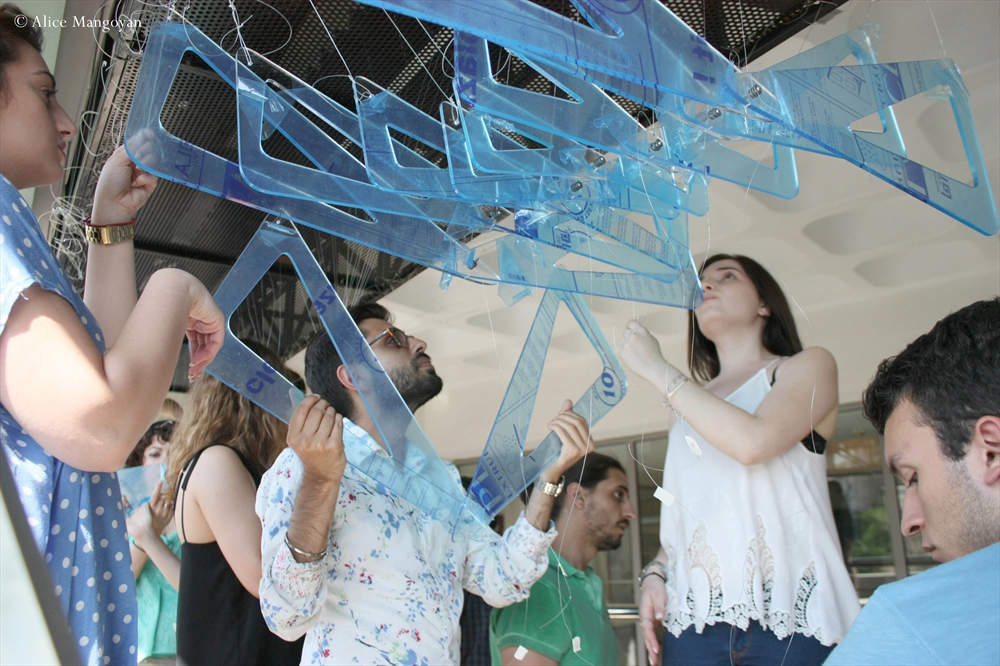 ASSEMBLY OF ?FLEXION? PROTOTYPE.
ASSEMBLY OF ?FLEXION? PROTOTYPE.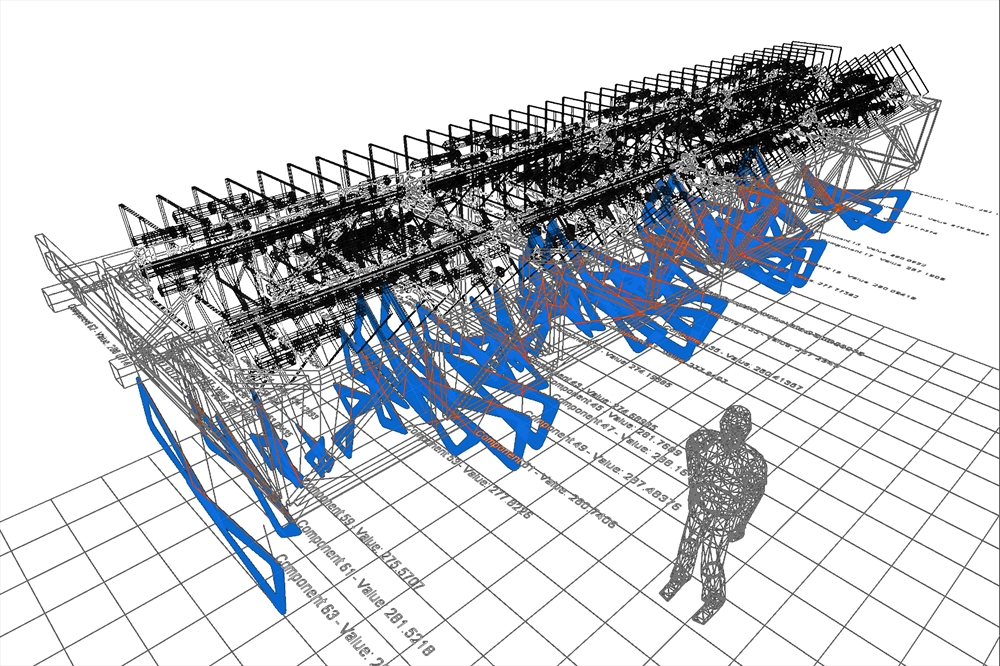 PERSPECTIVE VIEW OF THE COMPUTATIONAL MODEL ?FLEXION?.
PERSPECTIVE VIEW OF THE COMPUTATIONAL MODEL ?FLEXION?.READ ALSO: MUSEUM OF CHIOS MASTIC BY KIZIS ARCHITECTS